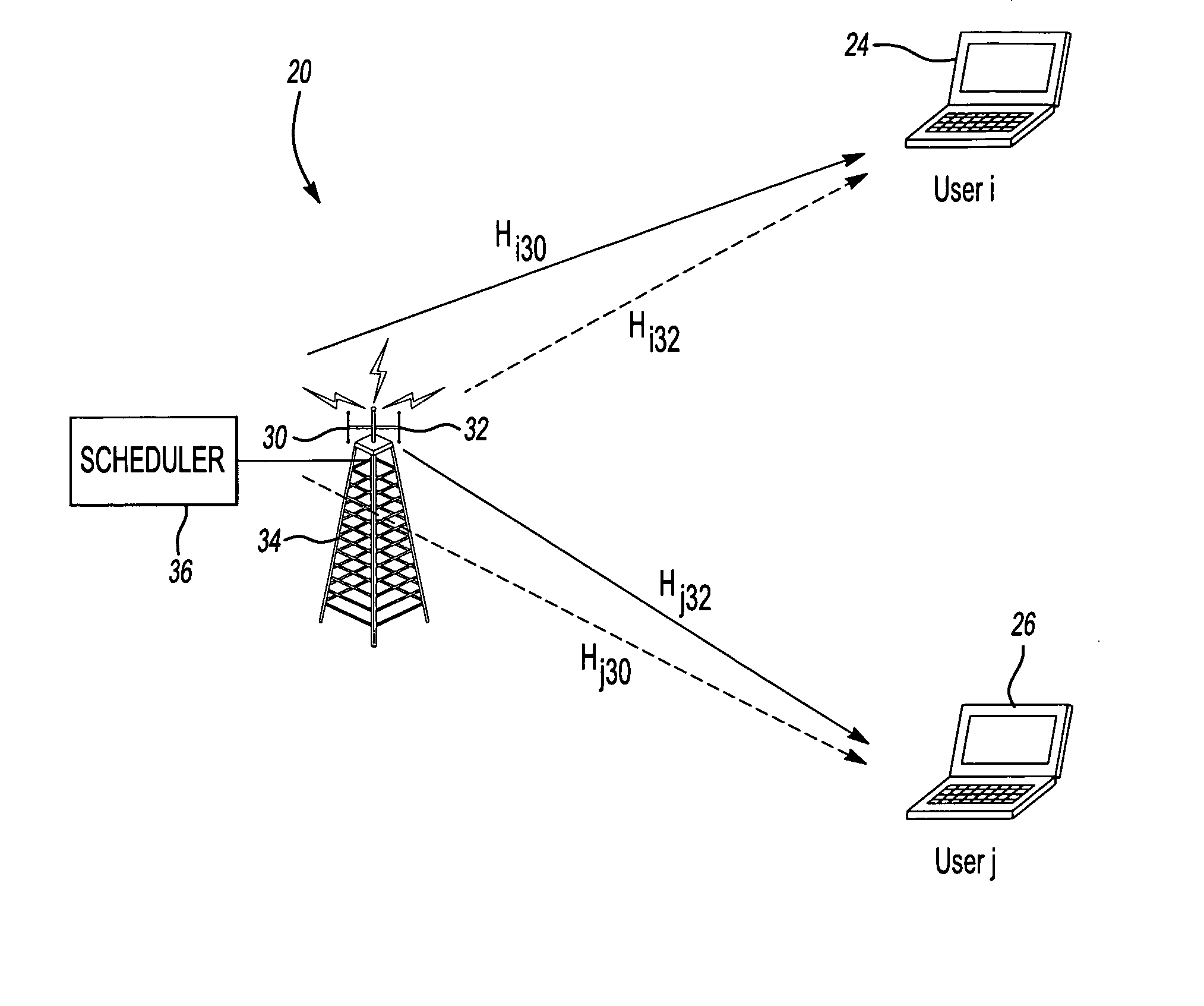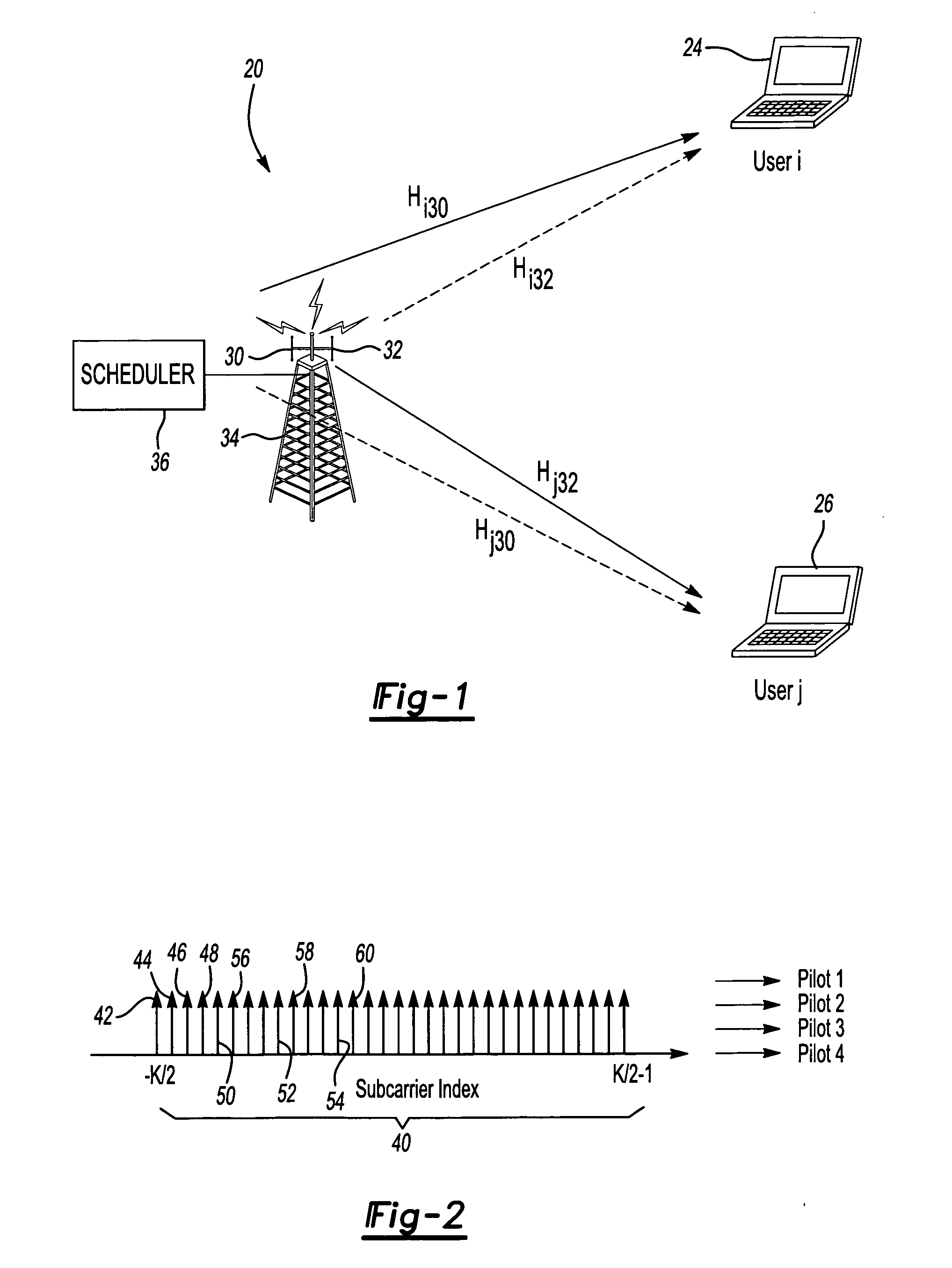Distributed multiple antenna scheduling for wireless packet data communication system using OFDM
a wireless packet data and wireless communication technology, applied in the field of wireless communication systems, can solve the problems of not necessarily helping to address the need to increase the number of subscribers that can adequately use the communication network, power and bandwidth are typically limited, and achieve the effect of simplifying the determination
- Summary
- Abstract
- Description
- Claims
- Application Information
AI Technical Summary
Benefits of technology
Problems solved by technology
Method used
Image
Examples
Embodiment Construction
[0017]FIG. 1 schematically shows selected portions of a communication network 20. A plurality of mobile stations 24 and 26 use wireless communication for transmitting and receiving signals. The mobile stations 24 and 26 may be any one of a plurality of known devices capable of wireless voice, data, video or combined communications. For purposes of discussion, the mobile station 24 will be sometimes referred to as user i and the mobile station 26 will sometimes be referred to as user j.
[0018] As schematically shown in FIG. 1, each of the mobile stations receives a communication transmitted from each of a plurality of antennas 30 and 32 of a base station 34. A scheduler 36 schedules transmissions from the antennas 30 and 32 such that a simultaneous transmission from each antenna is provided to each of the mobile stations. Although two antennas and two mobile stations are shown in FIG. 1, this invention is not limited to two-antenna or two-user arrangements.
[0019] As schematically sh...
PUM
 Login to View More
Login to View More Abstract
Description
Claims
Application Information
 Login to View More
Login to View More - R&D
- Intellectual Property
- Life Sciences
- Materials
- Tech Scout
- Unparalleled Data Quality
- Higher Quality Content
- 60% Fewer Hallucinations
Browse by: Latest US Patents, China's latest patents, Technical Efficacy Thesaurus, Application Domain, Technology Topic, Popular Technical Reports.
© 2025 PatSnap. All rights reserved.Legal|Privacy policy|Modern Slavery Act Transparency Statement|Sitemap|About US| Contact US: help@patsnap.com



